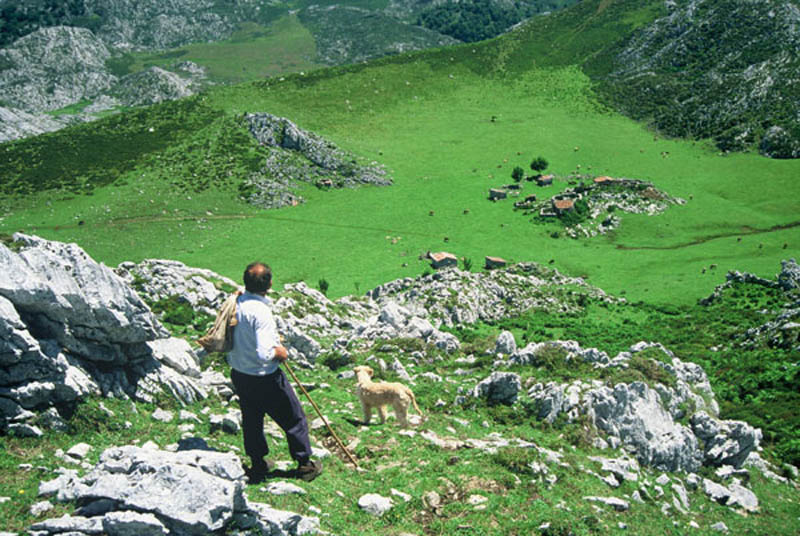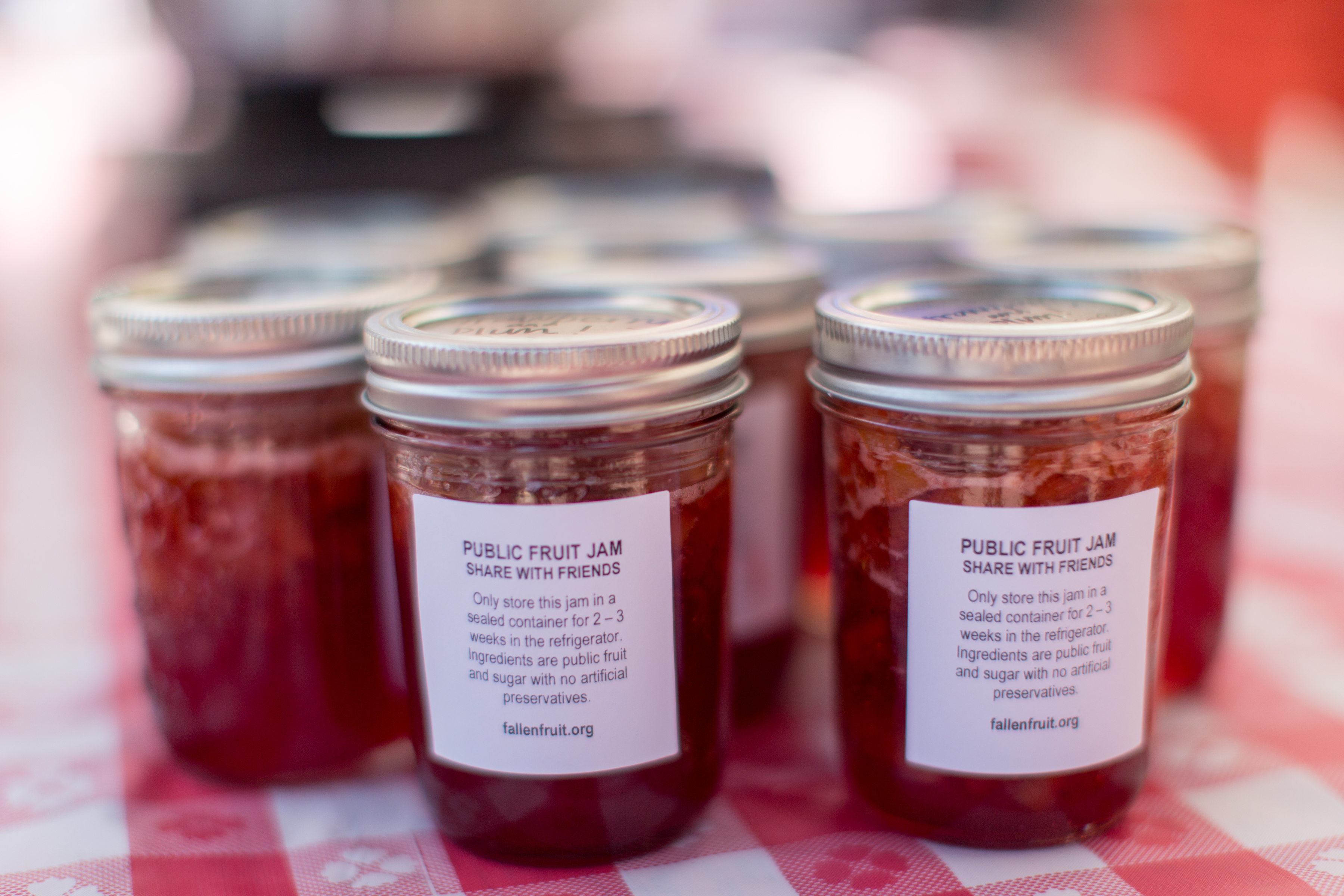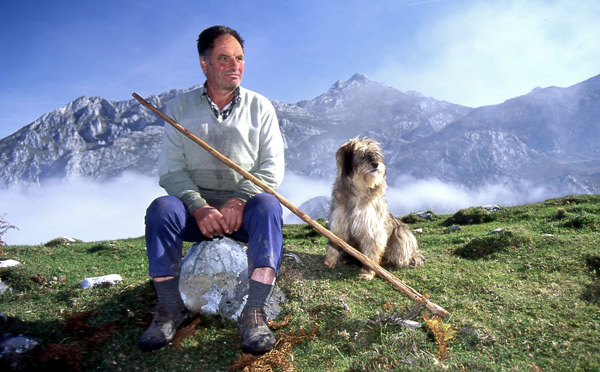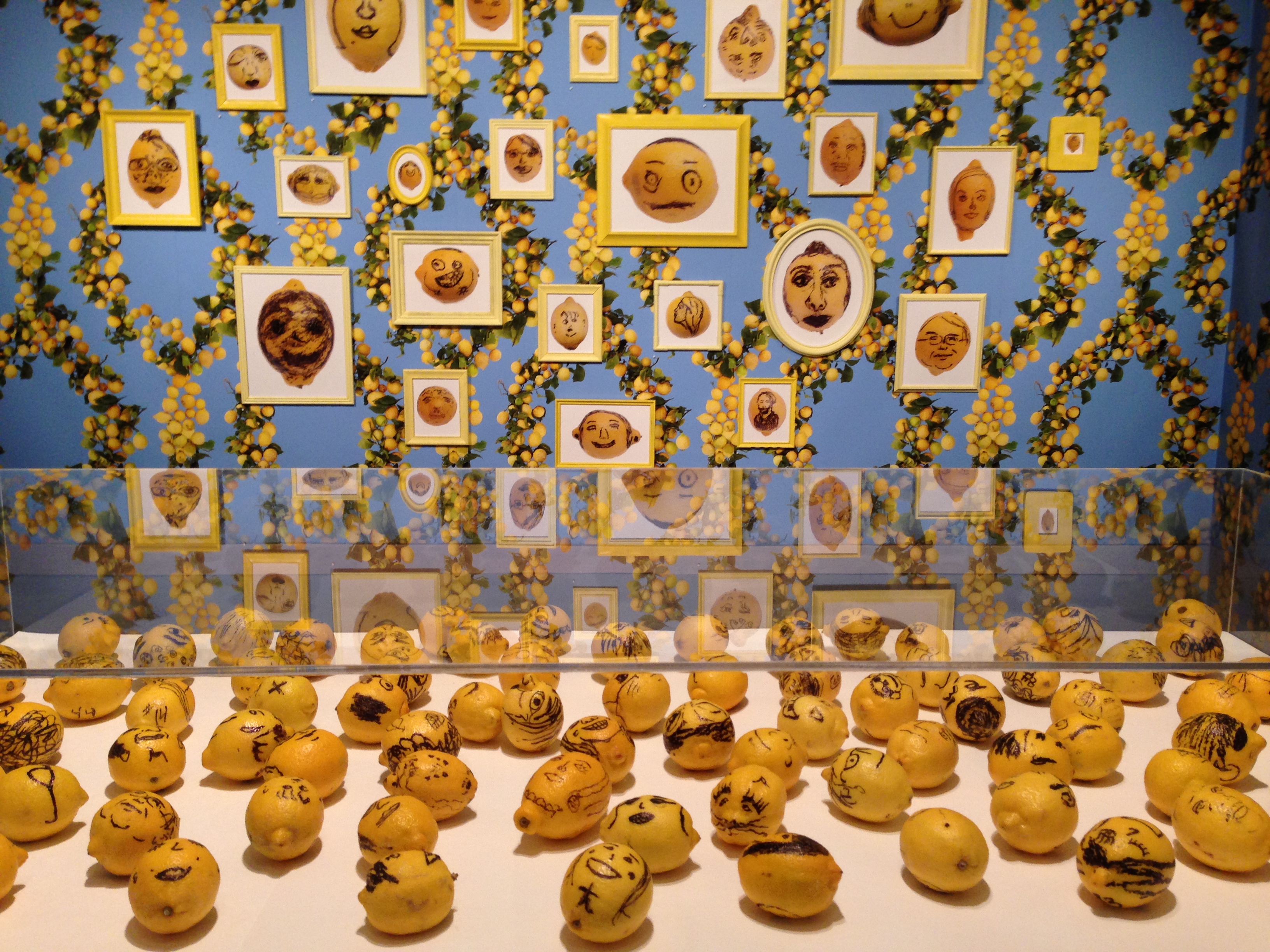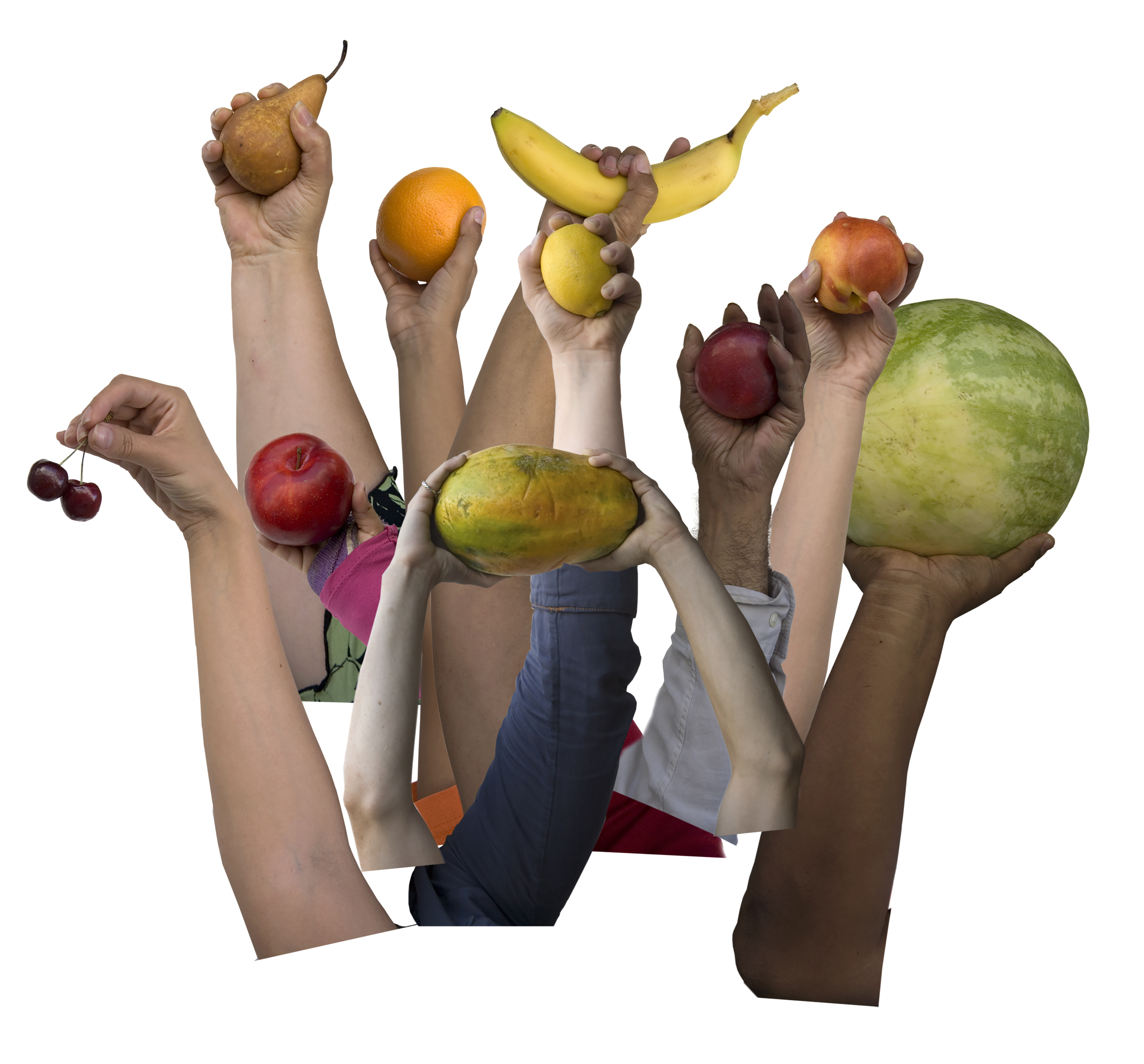Art and Food: Better Together?
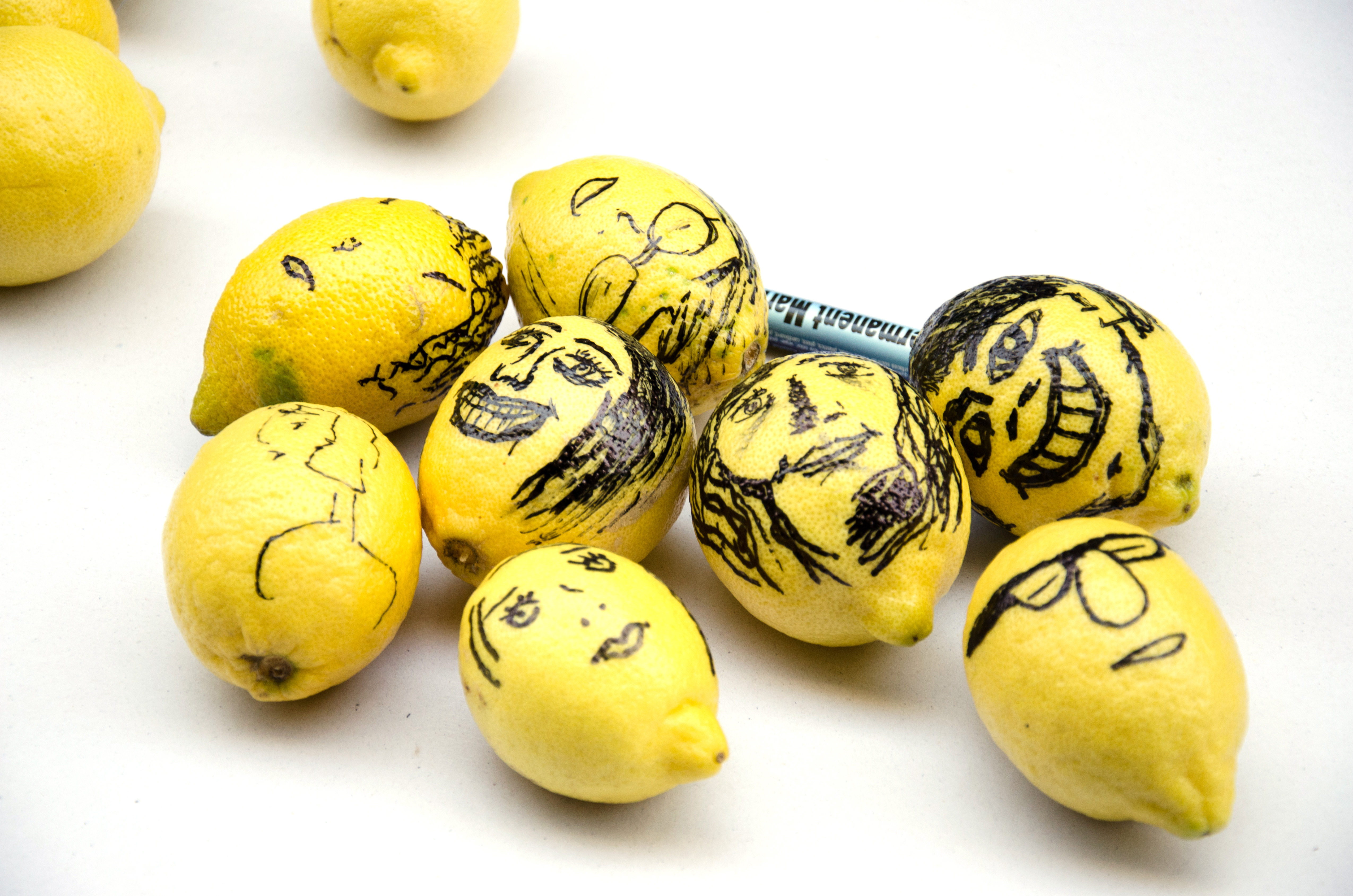
Fallen Fruit, Self-Portrait Lemons from Lemonade Stand, 2014, collaborative performance [courtesy of Fallen Fruit]
While food, social practice, and their convergence have played a role in artistic production for some time, they have resurfaced in recent years as a platform for audience engagement, and for social and political commentary. Questions of documentation and impact remain.
Share:
In 1993 the curator Mary Jane Jacob oversaw Culture in Action, a seminal exhibition of public art in Chicago. It was one of the first major citywide public art initiatives to abandon weighty, monumental sculpture. Instead, Jacob emphasized open-ended participation—not an easy sell for the exhibition’s funders, who were presented with only the loosest, most inchoate proposals. The art that Jacob was advocating for was aimed at fostering relationships between individuals and communities. These relationships were not of the in-gallery variety associated with “relational aesthetics” in Europe, which Nicolas Bourriaud would theorize and define three years later. Rather, they were intended to be both politically charged and, in diverse ways, productive. Among the projects included in Culture in Action was the collective HAHA’s Flood (1992-1995), a hydroponic garden planted to yield vitamin-rich produce for distribution to AIDS patients, and Mark Dion’s Chicago Urban Ecology Action Group’s series of local expeditions, discussions, and experiments with high school students of diverse backgrounds. In other words, whether works were material or immaterial was less important to Jacob than the art of working together to find solutions.
Two decades on from Culture in Action, recent years have brought an explosion of art in the social sphere. Jacob’s show feels more important than ever now; in fact, it was the subject of a recent addition to Afterall‘s series of publications, “Exhibition Histories.” Fueled by an apparent desire to effect change both on micro levels and global ones, artists have increasingly moved toward collaborative, reflexive, and—at their best—impactful projects. Cooperation, coalition-building, and the mobilization of invested publics and art audiences are among the tools that socially engaged artists have optimistically adopted amid efforts to reshape the contours of contemporary art practice. Even if this tendency wasn’t exactly “new” back in 1993, Culture in Action was an important precursor to all manner of recent initiatives, ones supported by organizations including New York’s Creative Time, and more region-specific outlets such as Grizedale Arts in England’s Lake District.
Fernando García-Dory, A Shepherds School as a Microkingdom of Utopia, 2004-ongoing, installation graphic material [courtesy of the artist]
In order to keep step, numerous institutions have swiftly adapted to the commissioning, and display, of social art. The result has been a tangible shift in social practice toward a reengagement with the (formerly dismissed) gallery or museum. This newfound, if belated, receptiveness on the part of the institutions to work in such an open-ended, collaborative manner is not only a reflection of social art’s undeniable momentum in an age of global calamity, but also of the efforts of a generation of mostly European curators connected with what came to be known as the “new institutionalism.” Emerging a decade or so ago, this term—which was borrowed from sociology—was defined in 2003 by the Norwegian curator Jonas Ekeberg as an “attempt to redefine the contemporary art institution … to let go, not only of the limited discourse of the work of art as a mere object, but also of the whole institutional framework that went with it.”1 More recently, the Vancouver-based journal Fillip dedicated a conference and publication to “new institutions” (such as the many members of the Pacific Association of Artist Run Centres), citing the climate of decreased public funding for the arts in North America and in Europe as the impetus for the emergence of a younger crop of improvised, small-scale, ephemeral, often nomadic, artist-led “institutions” (and also, therefore, rationalizing Fillip‘s commitment to the exposure of such projects).
Not surprisingly, a number of the curators and museum directors whose work has been discussed in relation to “new institutionalism”—such as Charles Esche, Maria Hlavajova, and Maria Lind—have also been some of the main exponents of socially engaged art. The leap from Chicago’s Culture in Action to a chiefly northwestern European “new institutionalism” might be attributed, in part, to the meteoric rise of the biennial, an exhibition model in which so many of the curatorial tendencies that would later be formalized by curators such as Bourriaud, Lind, and Esche were first tested.
Ten years on, though, there’s little consensus on how best to approach such de-institutionalized, institutional exhibitions, in part because the work produced in the name of social practice so often defies categorization. With an endless roster of potential “causes” to choose from (political, legislative, environmental, financial—take your pick), social art varies widely in approach, process, and outcome; at times it sits comfortably within—and makes use of—conventional exhibition frameworks, and at other times it seeks violent divorce from what remains the institutional status quo.
Fallen Fruit, from Public Fruit Jam, 2006-ongoing, collaborative performance [courtesy of Fallen Fruit]
One of the most visible subjects within social practice of late has been the politics of food. This category is a broad one, and a particularly challenging subject to take on: on the one hand you have “food,” an absolutely necessary, comestible ingredient of human life; on the other you have “art,” which is both praised and critiqued as pure superfluity. To make projects that tackle these dichotomous components requires thinking about them dialectically rather than as a binary—finding a way in which art can serve food, and food can serve art. For obvious reasons, no one agrees on how best to achieve this end, nor is there any single subject that seems to dominate the field, though common concerns include the provenance of food, political ecology, sustainable agricultural practices, and community regeneration. Recent projects run across that spectrum: Sanjay Kak’s films document flooding and food shortage in India; Fernando García-Dory’s Shepherd’s School (2004-ongoing) adopts the notion of cheese-making in northern Spain as a scaled ecosystem that can be used to restore value to a marginalized culture. Other examples include the (near ubiquitous) idea of local-bakeries-as-social-nexuses, realized by Alex Elmestad’s and Sean Starowitz’s Bread for Work (a riff on Julieta Aranda and Anton Vidokle’s project Time/Bank), and by Jeanne van Heeswijk’s contribution to the 2012 Liverpool Biennial, a collaboration with the Anfield community on a cooperative bakery called Homebaked, which later hosted a guest project from Amy Franceschini and her Flatbread Society.
The questions that attend any socially engaged work—like those that attend any work that is fluid or ephemeral, or of a “had-to-have-been-there” nature, especially when there is something so elemental and evanescent as food at stake—are myriad, as are the challenges to such practices. For starters, there seems to be a pernicious problem of “greenwashing” at work now in the contemporary art world, whereby institutional programming is made to appear at once environmentally and socially sustainable thanks to formalized associations with ecologically minded social-practice artists. Likewise, recent funding deficits in cultural sectors have provoked art institutions and art schools to expand their remit to include community outreach so as to satisfy new funding requirements, at the risk of breeding half-hearted institutional commitment with only minimal allocated resources. Artists, too, are conditioned by these funding structures. Many adapt more traditional practices to encompass social engagements, or they accept commissions whose curatorial parameters don’t easily accommodate their vision (which leads to projects that lack the integrity of work unhindered by these constraints). Although still more flexible than most institutions, the biennial can also be disastrous for many social-practice commissions by virtue of its exhibition model being so short-lived, whereas the work itself by nature so frequently requires longevity, endurance, and consistent, ample funding. To make matters worse, the more these half-realized projects fail, the less legitimate the work appears to the public and, perhaps more importantly, to the funding bodies whose support is a prerequisite for its production. Despite these obstacles and many others, there is nonetheless something endlessly encouraging about the amount of time and commitment that these artists give for little or often no remuneration—because even through heaps of failures, false starts, forgotten acts, and buried projects, these people persist in collecting the fallen fruits that litter the pavement, making jam, and then sharing it.
Fernando García-Dory, A Shepherds School as a Microkingdom of Utopia, 2004-ongoing, installation graphic material [courtesy of the artist]
In an effort to track this swelling area of artistic inquiry, a profusion of recent exhibitions and institutions have tackled the multiplex subject of “politics and food.” Some, like the University of Chicago Smart Museum of Art’s 2012 exhibition Feast, have assayed a broad survey of food-related projects, both historical and contemporary. Whether the works’ engagement with food was political in nature was not evidently a precondition for inclusion (the exhibition’s curator Stephanie Smith cited the Futurists’ envelope-pushing but unpoliticized experimental dinners in the 1930s as a chief inspiration). Feast‘s stated aim was to feature the work of collectives or artists who had “transformed the shared meal into a compelling artistic medium.” In keeping with that ambition, the exhibition included works such as Fluxus pioneer Alison Knowles’ Identical Lunch (1969) and Bay Area conceptualist Tom Marioni’s The Act of Drinking Beer with Friends is the Highest Form of Art (1970-ongoing), alongside such recent and far more politically charged projects as Chicago-based Michael Rakowitz’s Enemy Kitchen (Food Truck) (2012) and fellow Chicagoan Theaster Gates’ Soul Food Pavilion, which included a meal served with live musical accompaniment from the Black Monks of Mississippi.
For Enemy Kitchen (Food Truck), Rakowitz presented Iraqi cuisine on paper reproductions of plates looted from Saddam Hussein’s palace by US Soldiers during the Iraq war—one part of a larger, ongoing project begun in 2004 for which the Iraqi-Jewish artist compiles Baghdadi recipes and teaches them to different public audiences, among other endeavors. Gates’ contribution to Feast was a similarly symbolic representation of his enduring work within Dorchester Projects—the complex of renovated buildings on Chicago’s South Side in which he has built a kitchen and Soul Food Pavilion designed especially for “soul food ceremonies and acts of neighborliness.” Most, but not all, of the artists featured in Feast were subsequently invited to the University of Houston’s Blaffer Art Museum for a 2013 redux complete with a Gatesian soul food repast—this time purveyed within Project Row Houses, Rick Lowe’s Houston predecessor to Gates’ Dorchester Projects. As writer/curator Monika Szewczyk pointed out in a review of the Smart exhibition, “Feast pressed key questions about the politics of food, but also about the limits of the gallery as a primary site for contemporary art and, by extension, about that elusive province of art-making that often goes by the names of ‘community art’ or ‘social practice’”—a tall order for any single exhibition.2
Although food-related exhibitions from the last couple of years have strayed into every corner of the subject, few have been so inclusive as Feast, which traced the lineage of artistic engagements with the medium, from the Fluxus “happenings” of the 1960s through to 1970s performance art. Most presentations, like The Politics and Pleasures of Food (2013) at HALLE 14 in Leipzig, Germany, have focused on contemporary strategies and political engagements, often inviting in an artist (or artists) to guide the program. For the duration of HALLE 14’s exhibition, the Tunisian-born Jewish artist-in-residence Rafram Chaddad worked on Black Swan (2013), an installation and performance that entailed his growing and then serving whole-grain barley couscous to gallery visitors. Other exhibitions have been more strenuously thematized, such as Vegetation as a Political Agent (2014) at Parco Arte Vivente, Turin, where the lofty curatorial goal was “to shed light on the various stages in history in which vegetation served as a symbol of social emancipation.”
Elsewhere, curatorial approaches have relied simply on gathering together a number of key actors in the movement, without much in the way of thematic over-determination. Such was the case with Vivre(s) (2014), in which a diverse array of work was installed at Domaine de Chamarande, France, featuring collectives such as Futurefarmers and the Harrisons, and individual artists such as Fernando García-Dory and Rirkrit Tiravanija (whose curries, not to mention his project, The Land [1998-ongoing], might serve as something of a bridge between Bourriaud-approved “relational aesthetics” and the socially engaged work of this decade). Meanwhile, London’s Delfina Foundation is in the midst of a four-year program whose theme is “The Politics of Food.” Its first season brought together 41 artists, activists, anthropologists, chefs, curators, scientists, and writers from 15 countries for a series of lectures, meals, residencies, and exhibitions. Its imminent second season is to examine the somewhat sensational-sounding “connections between sex, diet, disasters and food in both historical and contemporary contexts.”
Fallen Fruit, Lemonade Stand (installation view), 2014, from Food for Thought at Weatherspoon Art Museum, NC [courtesy of Fallen Fruit]
Antoni Miralda’s influential Madrid-based collaborative entity FoodCultura, which describes itself as “a market and a stomach, an archive and a mouth, a center for exchange and a brain, a laboratory and a tongue … a wallless [sic] space dedicated to communication and investigation, as well as the global history of food, customs, cultural experiences and art,” also deserves to be mentioned, if only for the duration of its founder’s commitment to the subject and for the many artists who regard Miralda as an important predecessor (whose recent retrospective exhibition De gustibus non disputandum opened at the Reina Sofia in 2010). Likewise, Lind’s dedication, as director of Tensta konsthall in Stockholm, to grappling with regional urban/rural friction via gallery programing is commendable, as is her enduring support of artists such as García-Dory.
Among García-Dory’s projects is the “para-institution” Inland; advised by Chus Martinez, the Head of the Institute of Art at the FHNW Academy of Art and Design in Basel, it fuses art and farming as a way to expand creative thinking and sustain site-specific artistic practice—an initiative that chimed with Lind’s ambition to investigate local discord following the disappearance of agricultural lands around Stockholm. García-Dory worked with Tensta konsthall on a project that initially focused on Hästa Gsrd, a historical farm in Järvafältet, Stockholm, that shares borders with the suburbs of Akalla, Hjulsta, Husby, Kista, Rinkeby, and Tensta. Hästa Gsrd (or Model Farm) was adopted as a study case through which existing relationships between the city and the countryside could be more closely examined. García-Dory involved local activists, Hästa farmers, nationwide organizations, and cultural institutions to, in his hopeful words, “situate crucial contemporary questions such as the role and function of arts, territorial transformations, biopolitical tensions, multi-dimensional crises, necessary transitions to sustainable models, troubled identities, and imagined futures.” Model Farm, which, at the time of its inclusion in the exhibition Tensta Museum: Reports from New Sweden in 2013, was shown as a production sample, drawing, collage map, and video portrait, remains unfinished as a social experiment.3
Perhaps some of the most important players in this burgeoning scene are the Frieze Art Fairs. For Frieze London 2012, the Frieze Foundation and Grizedale Arts (an organization that facilitates some of the most compelling examples of social engagement in the contemporary art world) hosted a program of food-related performance, discussion, display, and retail called “Coliseum of the Consumed.” It was housed in a custom-built structure at the center of the art fair, where artists, collectives, and community groups staffed booths around the structure’s periphery and sold homemade food while, in theory at least, discussing ideas for alternative eating. Together with Frieze New York’s 2013 reconstruction of Gordon Matta-Clark’s Food (1971), such projects highlight the spectacular logic of fairs and biennials, which privilege and rely on performative culinary engagements to draw crowds, to make money, to entertain—you name it, the capitalistic incentive is there. In fact, getting the “right” restaurant concessions to operate at the fairs has become central to a successful branding strategy. At Frieze New York, visitors can dine on food from Mission Chinese Food and Roberta’s outposts on site, whereas tables are hard to come by at their permanent locations. Such dependencies hint at the fact that food culture has become an accessory and a bridge to the art world—one that isn’t at all likely to go away. Food is, after all, integral to the upper end of the market, and to how people perform sociability in a contemporary art context.
There are far too many relevant exhibitions and projects to continue enumerating them here, and, as one quickly discovers from an Internet-mediated remove, it’s nearly impossible to fathom the quality or success of each (it turns out it’s easy to make something flimsy look good on a blog).4 Few, if any, of the artists working with food and social practice explicitly address the challenges of documenting an art that requires participation, a problem that recalls Douglas Crimp’s interrogation of “presence,” of what he called “the being there necessitated by performance” as opposed to “that kind of presence that is possible only through the absence that we know to be the condition of representation.”5 Projects that rely on participation—especially when there is food to be consumed—are doubly challenged: no matter how potent or provocative, any ideas served up on a plate will have been literally digested and shat out come morning.
Fallen Fruit, Public Fruit Jame Fruit Hands Poster, collaborative performance [image courtesy of Fallen Fruit]
With the subject of food gaining increasing traction within artistic communities, it’s tempting to attribute the recent flurry of convivial projects to a prevailing cultural condition of digital dependency. The internet, here, acts as a word-spreading vector (ideal publicity for the ephemeral pop-up, the one-off dinner, the supper club, or the flash picnic) and is to blame for the particular brand of 21st-century alienation that drives people in curious droves toward organized social gatherings. In a 2011 frieze article called “Growth Market,” Steven Stern links artistic engagement with food to the rise of “foodie culture.” In the United States especially, but also in Europe, these two cultural phenomena have for better (but mostly for worse) dovetailed. Stern makes this argument without much in the way of condemnation, beginning with a hagiographic description of Roberta’s, a pizza restaurant-cum-farm and cultural hub in Bushwick, and ultimately looking back to Matta-Clark.
Although Matta-Clark’s Food was by no means the only project to have laid the groundwork for the types of food-engaged social practice visible today, it set an important precedent. Its cultural role in SoHo (before SoHo was even known as such) was comparable to that of an alternative arts space, and indeed, the 112 Greene Street workshop in which Matta-Clark and many of his contemporaries showed did become the nonprofit White Columns. Food was a functioning restaurant, in a neighborhood where nothing of the kind existed at the time.
The establishment was important not just for incubating collisions of conceptual—even surreal—approaches to art-making, but also for pioneering new types of cuisine. It may, for example, have served some of the first sushi in New York, thanks to Robert Rauschenberg’s Japanese assistant, Hisachika Takahashi. And, while the reconstruction of Food as a commissioned project at Frieze New York was a terrible failure—putting it in a miserable tent on an island by a commercial art fair deracinated and detemporalized the project—Matta-Clark’s spontaneous pig roasts under the Brooklyn Bridge have found an echo since in events such as the culinary art collective OPENrestaurant’s Futurist-inflected steer roast and ritualized butchering at SFMOMA in 2009 (performed, it should be noted, exclusively by female chefs).
The projects that frame food and feasting as spectacle—which is to say, untethered to any more polemical intention—often vary in degrees of impact, from ephemeral to embarrassing. The latter was certainly the case with Jennifer Rubell’s catastrophic Creation, a made-to-be-eaten food installation conceived for Performa’s opening celebration in 2009, and therefore also a gold mine for Artforum‘s online gossip column “Scene & Herd.” Although ostensibly intended to address questions of excess in a time of increasing global food shortages, the thousands of champagne glasses and piles of ribs and vats of cookies laid out for the moneyed hordes did little to register anything in the way of meaningful political commentary. Rubell’s project, however unsuccessful, seemed to be looking back to such antecedents as Daniel Spoerri’s 1963 performance called Restaurant de la Galerie J in Paris, for which the artist cooked while art critics served as waiters—a play on the idea of the critic bringing art to consumers, and feeding them with an understanding of the work. In 1968 he followed that work with Restaurant Spoerri in Düsseldorf, to which he added Eat Art Galerie upstairs in 1970 (the latter work was included in Smart’s Feast exhibition). The difficulty with such performances of ostentatious acts of cooking and eating is that, even given an articulated desire to shift perspectives, the potential impact of the work is so often diluted by the spectacular nature of the proceedings. Which is to barely dwell on the challenges of explicating complex processes or lines of inquiry to a limited, navel-gazey audience—who, had smart phone apps existed in the 1960s, would undoubtedly have been rabid followers of Spoerri’s Instagram feed.
It would be impossible to conclude this piece without returning to Creative Time, a nonprofit organization that has, over the last four decades, commissioned and presented socially engaged public arts projects across all disciplines. Since 2009, Creative Time has granted the high-profile Leonore Annenberg Prize for Art and Social Change, a cash award that has become a seal of authenticity for artists working in the social sphere. Among the six recipients thus far are three artists who have engaged with the politics of food in some way: Rick Lowe (2009); Jeanne van Heeswijk (2011); and García-Dory (2012). Nato Thompson, the chief curator of Creative Time since 2007, insists that the ethics of a project’s outcome are paramount, though the art then threatens to drift perilously out of the frame. In a conversation whose content was published last year, Thompson said, “There remains an urgent imperative to all this work that makes communicability an ethical responsibility, not simply a methodology. And with that, making space for action to occur by using this work to move across the political landscape, highlighting where points in power are vulnerable, so that audiences can be engaged enough with ecological concerns to translate pedagogic value into social power [are key].”6 Even if Thompson’s point is that effective activism relies on a number of tactics (blunt repetition, clear messages, etc.), all of which are difficult to reconcile with effective, nuanced art, there’s something about his call to arms that resonates with the best of food-engaged social art: the exceptional variety that succeeds in being both easily digestible and nourishing in the long run.
Fanny Singer is an American writer, art historian, and curator based in St. Ives, Cornwall.
References
| ↑1 | Jonas Ekeberg, ed., New Institutionalism, Verksted #1 (Oslo: Office for Contemporary Art Norway, 2003), 9. |
|---|---|
| ↑2 | Monika Szewczyk, “Feast: Radical Hospitality in Contemporary Art,” frieze, no. 149 (2012). |
| ↑3 | García-Dory worked with Tensta over a period of four months while in residency with the Swedish Arts Grants Committee’s International Programme for Visual Artists. During that time, he collaborated with Erik Sjödin and an autonomous gardening group operating on public land in the suburbs—the intention being to use the arts framework to legitimate the project. After an intense struggle and collapse of funding, the group was evicted by the city council, and the project was stymied. García-Dory will, however, further develop the question of “ideal” artist communities within agro-ecological contexts for a current project of Lind’s at MAK/Kunsthalle Wien (part of the initial programing for the 2015 Vienna Biennial). |
| ↑4 | Other exhibitions such as Feast and Famine: The Pleasures and Politics of Food (January-May 2014) at the Portland Museum of Art, or Art and Appetite: American Painting, Culture, and Cuisine, which ran at the Art Institute of Chicago November-January 27, 2014, and travelled to the Amon Carter Museum of American Art, Fort Worth, TX, are not in the least polemical. Rather, they capitalize on the current, faddish attraction of “food” (while simultaneously bearing the most uniformly and terribly unimaginative exhibition titles) without making any claim to discursiveness. |
| ↑5 | Douglas Crimp, “The Photographic Activity of Postmoderism,” October 15 (1980), 91-101. |
| ↑6 | Steven Lam, Gabi Ngcobo, Jack Persekian, Nato Thompson, Anne Sophie Witzke, and Liberate Tate, “Art, Ecology and Institutions,” Third Text 27, Issue 1 (2013): 150. |
